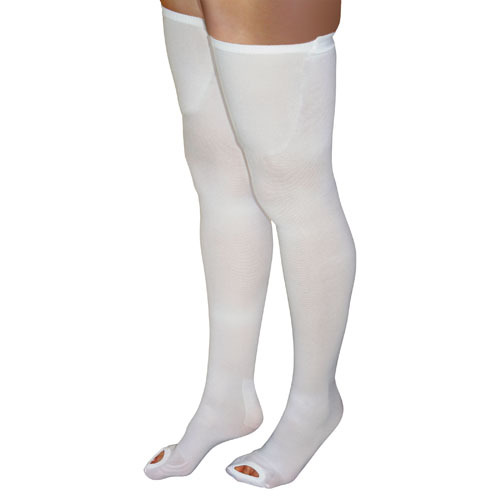Compression Apparels: How They Work And What Are Their Types!!
Posted by B&F Medical Supplies on Feb 28th 2019
Compression apparels are mainly designed to help improve the performance and reduce the recovery time of an injury. These garments improve blood circulation and provide more effective blood flow in order to filter the toxin elements from muscles during exercise. In addition, they also provide better oxygenation to the muscles. Compression garments also have a muscle stabilizing effect that helps to bring better muscle alignment and reduce micro tears. By wearing these, the user can hope to perform better, have fewer leg cramps and heaviness while reducing the risk of muscle aches after training or exercising.

Indeed, one of the major advantages of compression apparels for people is a faster recovery and reducing muscle pain which usually occurs after an intense long run and physical exercise.
How Compression Apparel Works?
Compression garments are now widely accepted in the sports community and are something which is a must-have on every successful athlete’s list. What makes compression wear different from ordinary garments is the manner in which the fabric is created and how they work. The elastic element compression fabric of the apparel molds around various parts of the body, and further helps to increase lymphatic and blood flow.
In sports, compression apparels are generally meant to improve performance. You would have noticed sports players and athletes wearing skin-tight clothing that leaves a very less breathing room between the cloth and skin. That’s what brings in the benefit and helps in the increased performance of the player. Compression garments also result in quicker recovery of the injuries because of the increased blood flow in the body. They work by preventing excessive lactic acid build up in different parts of the body and further expedite the recovery of an injury. Not only do they extend the time duration the muscle can push, but these apparels also reduce muscle strains as well as minor muscle tears thus reducing the potential for injury.
Types of Compression Garments
Compression apparel can be characterized into upper and lower body wear.
Compression upper body wear provides fit support around the stomach, lower back and the sides, which can become exhausted particularly after long runs and physical exercises. Half sleeve and full sleeve compression upper wear offer a support system to the upper body that traces over the major muscle groups in the shoulders and the arms. This speeds up muscle recovery, improves muscle performance and also reduces post-exercise muscle strains and cramps.
Compression lower body wear comprises of tights, socks, and sleeves. These days, almost all the runners use compression socks and tights because they keep cramps and muscle strains at bay. The compression lower wear offers full stability and support to the main muscle groups in the lower legs which make them ideal wear for athletes, runners and regular people who want to increase their gym training intensity and reduce muscle strain before a marathon or a competitive event.
As you can now see that there are plenty of advantages of wearing compression apparels regardless you just have to choose the right fit for you. You don’t really have to be a professional athlete or a sportsperson to use compression garments. Anyone who wishes to improve their exercise performance and reduce their injury recovery time can greatly benefit from wearing these.
